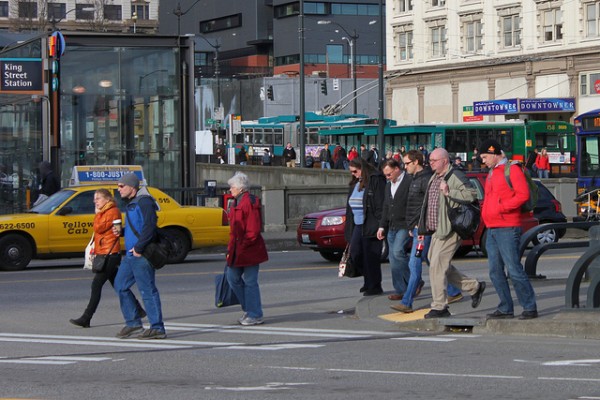Our client, a lady in her seventies, was riding her bicycle in the bike lane when a man driving a large pick-up truck turned right from a cross street and struck her from behind, knocking her to the pavement.
- She was rushed by ambulance to the emergency room where she was diagnosed with four rib fractures on the right and pneumohemothorax (collapsed lung). She was given an epidural for pain.
- A CT scan revealed a massive right rotator cuff tear. X-rays revealed a right elbow enthesopathy (detached tendon).
- She remained hospitalized for six days before being transferred to a rehabilitation center. She underwent occupational and physical therapy. She remained there for six additional days. She was given instructions for home self-care and was advised to keep her right arm in a sling.
- She continued follow-up care with orthopedic surgeon. She underwent epidural injections in her shoulder. An MRI on March 18 revealed the large rotator cuff tear with associated muscular atrophy, tendinosis of the subscapularis and arthropathy.
- She endured several grueling months of physical therapy and rehabiltation. Developing adhesive capsulitis (frozen shoulder) is common in this type of injury and she will have to continue a dedicated self-help home care program of exercise and stretching.
- Due to her age it was decided that rotator cuff repair surgery was not a viable option despite her limited range of motion. However, her orthopedist indicates that a total shoulder replacement is a very real possibily.
- Prior to the accident she had a very active lifestyle. She played golf with friends twice a week and biked with friends several times a week. In the winter she participated in bowling. All of these activities have been curtailed during the rehabiitation from her injuries.
- She has developed symptoms of PTSD, anxiety and depression and will need to continue to address these issues with additional talk therapy.
- She also needed dental work for a cracked tooth and crown.
The law firm of MartinLaw PLLC was successful in completing a mid six figure settlement for this lady within six months of the accident.
To find out how MartinLaw, PLLC and attorney Chuck Martin will handle your car or bicycle accident case please visit the bicycle or car accident page.

